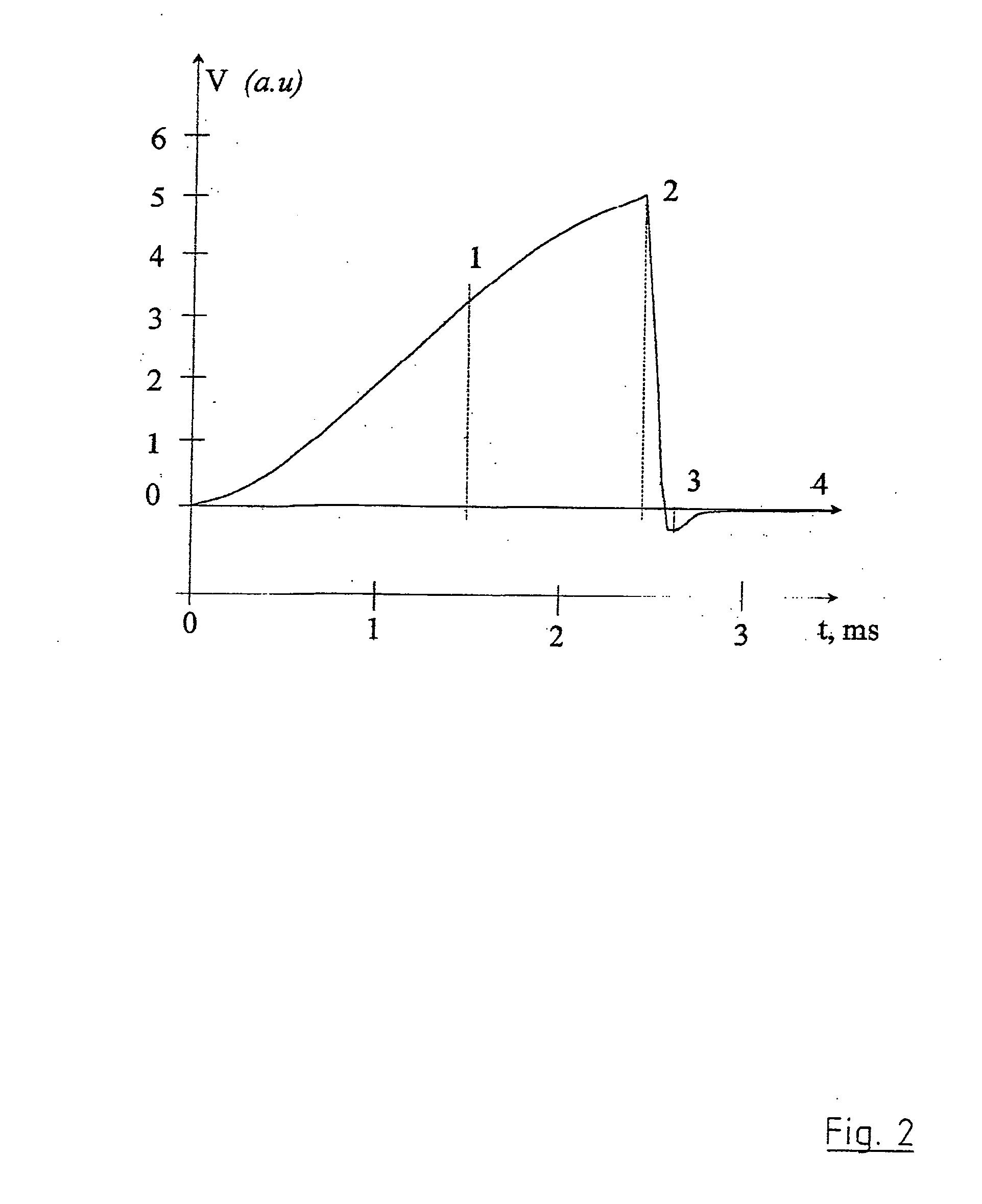Apparatus and method for droplet measurements
a technology of droplet measurement and measuring apparatus, which is applied in the direction of measuring apparatus housing, capacity measurement calibration, disinfection, etc., can solve the problems of inability to monitor the visual arrival of a tiny drop to a destination substrate, difficulty in consistent dispensing, and incorrect diagnosis, so as to achieve close correlation
- Summary
- Abstract
- Description
- Claims
- Application Information
AI Technical Summary
Benefits of technology
Problems solved by technology
Method used
Image
Examples
Embodiment Construction
[0058] The invention beneficially utilises the often overlooked fact that in a typical low volume non-contact mode dispenser the drop is often ejected in the form of a jet segment or elongate drop or droplet rather than a sphere. As explained above, the sphere is then formed out of the segment due to surface tension. It is true to say that if the pressure difference at which the drop is ejected is low, the drop can still grow in sphere-like shape at the end of the nozzle. However, in this case the drop tends to remain attached to the nozzle up to a relatively large volume per drop dispensed. Therefore, to achieve detachment of the drop from the nozzle, the drop often needs to be a ejected at a relatively high pressure and thus it forms a jet. For more details on this one can consult the specifications of the following patent applications, namely: U.S. patent application Ser. No. 09 / 709,541 (Shvets et al), filed 13 Nov., 1990; PCT patent Application No. PCT / IE02 / 00039 (Shvets et al),...
PUM
| Property | Measurement | Unit |
|---|---|---|
| carrying frequency | aaaaa | aaaaa |
| carrying frequency | aaaaa | aaaaa |
| volumes | aaaaa | aaaaa |
Abstract
Description
Claims
Application Information
 Login to View More
Login to View More - R&D
- Intellectual Property
- Life Sciences
- Materials
- Tech Scout
- Unparalleled Data Quality
- Higher Quality Content
- 60% Fewer Hallucinations
Browse by: Latest US Patents, China's latest patents, Technical Efficacy Thesaurus, Application Domain, Technology Topic, Popular Technical Reports.
© 2025 PatSnap. All rights reserved.Legal|Privacy policy|Modern Slavery Act Transparency Statement|Sitemap|About US| Contact US: help@patsnap.com



